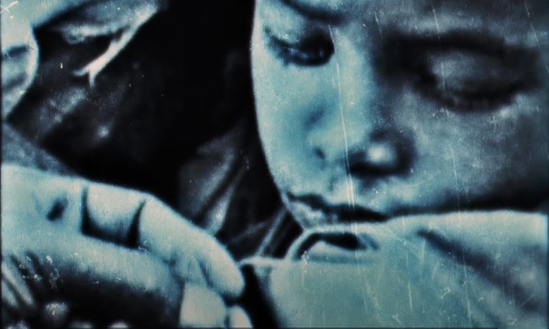The WHO smallpox eradication campaign was launched in its intensified form in 1967, and in four years had wiped out smallpox in Latin America. Four more years toppled the disease's last bastion in Asia. The multi-national teams closed in on Somalia, scene of "the last stand". The eradication of smallpox from the world was certified by the Global Commission, an independent panel of scientists drawn from 19 nations, in December 1979 at WHO Headquarters, Geneva.
Smallpox
Smallpox is an acute contagious disease caused by the variola virus, a member of the orthopoxvirus family. It was one of the most devastating diseases known to humanity and caused millions of deaths before it was eradicated. It is believed to have existed for at least 3000 years.
The smallpox vaccine, created by Edward Jenner in 1796, was the first successful vaccine to be developed. He observed that milkmaids who previously had caught cowpox did not catch smallpox and showed that a similar inoculation could be used to prevent smallpox in other people.
The World Health Organization launched an intensified plan to eradicate smallpox in 1967. Widespread immunization and surveillance were conducted around the world for several years. The last known natural case was in Somalia in 1977. In 1980 WHO declared smallpox eradicated – the only infectious disease to achieve this distinction. This remains among the most notable and profound public health successes in history.
Early symptoms of smallpox include high fever, fatigue and severe back pain, and less often, abdominal pain and vomiting. Two to 3 days later the virus produces a characteristic rash with bumps full of a clear liquid, which later fill with pus and finally develop a crust that dries and falls off. The rash begins on the face and hands, then spreads to the rest of the body. Lesions develop in the mucous membranes of the nose and mouth and ulcerate soon after formation.
Smallpox is transmitted from person to person via infective droplets during close contact with infected people who have symptoms of the disease, or in some cases through contaminated clothing and bedding. It has an incubation period of 7–17 days after exposure and only becomes infectious once a fever develops. People remain infectious until the last scabs fall off.
Smallpox was fatal in up to 30% of cases.
The period since eradication has been defined by a lengthy and complex debate focussed on the destruction of the last remaining stocks of live variola virus. In 1996, at the 49th World Health Assembly, Member States decided to have this stock destroyed in June 1999, and only to allow small samples to be kept for research purposes at two designated secure laboratories – one in the United States and one in the Russian Federation. Temporary retention of the existing stocks of variola virus are used for further essential research, which is overseen by the Advisory Committee for Variola Virus Research. This group meets on an annual basis.
The WHO Smallpox Secretariat based in WHO Headquarters coordinates all smallpox eradication-related and post-eradication activities. These include overseeing permitted research with live variola virus for the development of countermeasures such as vaccine and antivirals. Since the eradication era, safer vaccines and specific treatments have been developed for smallpox and related diseases such as monkeypox. The Secretariat is also responsible for emergency preparedness and manages a smallpox vaccine emergency stockpile in the unlikely event that the disease re-emerges. The Secretariat manages the biosafety and biosecurity inspections of the authorized variola virus repositories as mandated by the World Health Assembly, and ensures annual reporting to WHO Governing Bodies. The Smallpox Secretariat supports WHO Archives in preserving the global history of smallpox and documenting the lessons learned from successful eradication of smallpox.
The WHO Smallpox
Secretariat's current roles and responsibilities include:
Variola virus research and development of countermeasures
- organizing annual meetings of the WHO Advisory Committee on Variola Virus Research (ACVVR)
- coordinating review of research proposals for work with variola virus through the ACVVR
- managing relationships with the two variola virus repositories (which are also WHO Collaborating Centres)
- recording, processing and monitoring requests from researchers for variola virus DNA from the 2 repositories under specific rules
- conducting biennial biosafety and biosecurity inspections of the 2 global variola virus repositories
- developing normative guidance regarding research on variola virus DNA and related matters
Emergency preparedness and response
- coordinating and preparing normative guidance on development and use of medical countermeasures for orthopoxviruses
- developing preparedness and response strategies, and tools to implement preparedness measures
- maintaining and managing the smallpox global vaccine stockpile
- coordinating development of a laboratory network for orthopoxvirus detection and diagnostics
- developing normative guidance and response strategies for human monkeypox and other orthopoxviruses
- supporting capacity-building and developing training materials
- contributing to global health security initiatives
Preserving global smallpox history
- overseeing the Smallpox Eradication Programme archives in collaboration with WHO Archives and the WHO Library
- leading on policy discussions and commemorative events regarding smallpox eradication
- reporting annually to the WHO Executive Board and the World Health Assembly
The Secretariat also mobilizes and manages funding for these activities and for ad hoc events as required such as technical consultations and training.















